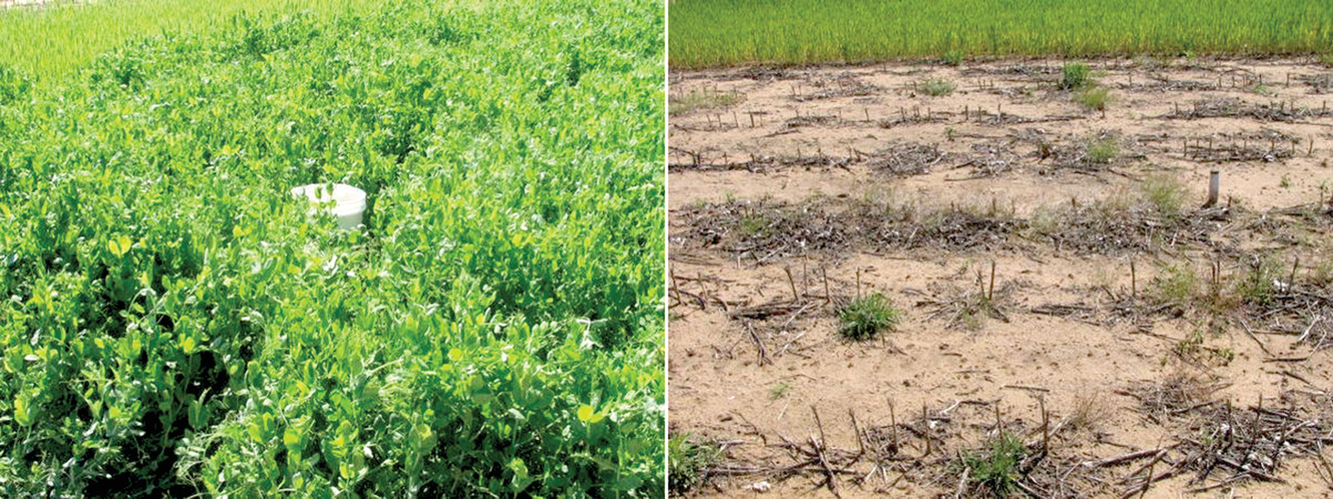Winter Cover Crops Improve Soil Health in Texas Cotton

The southern Great Plains are often stressed with extreme drought and unfavorable growing conditions for agricultural production. Farmers who use fallow management risk soil and nutrient loss during the limited precipitation that does occur, which usually comes in the form of intense and localized rainstorms.
A research team from Texas A&M University examined alternatives to fallow management by using no‐till agriculture in tandem with a cover crop while cotton is not in season. Ideally, the offseason ground cover provided by cover crops promotes greater erosion control, water capture, and increased soil health, minimizing droughts’ damaging effects. Various single‐species cover crops and a cover crop mixture were evaluated in a long‐term continuous cotton system.
After measuring soil health by soil organic carbon, available nutrients, and carbon mineralization, the team found that single‐species Austrian winter pea treatment resulted in greatest overall soil health improvements. The treatment can be a useful alternative to fallow management under water‐limited dryland agriculture conditions. A mixed‐species cover crop did not provide additional benefits compared with successful cover crop monocultures.
Cover crops can provide soil health benefits to continuous cotton systems in water‐limited environments under rainfed conditions and enhance no‐till systems.
Adapted from Hux, B.A., DeLaune, P.B., Schirmarcher, M.T, Gentry, T.J., & Mubvumba, P. (2023). Winter cover crop impact on soil health in Texas rolling plains dryland cotton. Agrosystems, Geosciences & Environment, 6, e20352. https://doi.org/10.1002/agg2.20352
Text © . The authors. CC BY-NC-ND 4.0. Except where otherwise noted, images are subject to copyright. Any reuse without express permission from the copyright owner is prohibited.











